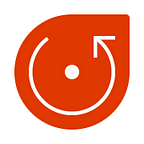New user-friendly approach to dashboard creation
Flexmonster Team is constantly in the process of improving our products. And we love to share it with you!
In this small article, we will give you a peek into our inner development processes and show you what we’re up to now.
The base
A lot of our clients use pivot tables in combination with other types of visualization to create interactive dashboards. It’s a convenient solution to combine several data slices or even datasets on one page.
The inconvenience occurs when you create the dashboard. Often, you need more than one pivot table to see different slices. Or you want to see two different datasets on two different views. Another option is when you need different controls for visualizations but want them to be based on the same dataset.
Our team decided to work out a “dashboard-friendly” approach to avoid loading the dataset twice and creating two components. The new approach should be as flexible as possible and give the developers an easy way to create, rearrange, and reuse different dashboards.
How does it work?
The approach allows each individual UI element, such as the pivot table, the pivot charts, the Toolbar, or the Field List, to function independently while still interacting with each other.
You can have one control center responsible for everything and still have several datasets, table views, and data visualization forms. You can freely arrange several different controls with several different datasets inside one report with one component.
Using custom elements, we’ve been able to create custom tags for each visualization and each control, so integrators can implement reusable elements and have less code but a more modular approach to app creation.
By assigning a certain state to the created elements, the developer can connect them with controls and datasets to support the business logic of their reports. And the same business logic can be used many times by the use of custom tags.
You can check out the video on our channel, where we show how it will look in real-life development.
What do you think?
In developing this approach, our goal is to simplify the dashboard creation for the developer by giving him more flexibility and creating a more simple architecture. We also aim to improve users’ reporting workflow by enhancing data exploration possibilities, extending abilities within one report, and making it easier to run the project with different data sources.
We are in the stage of implementing this approach to all our products (Flexmonster, WebDataRocks, DataTableDev) and would be glad to hear the feedback. If you have any thoughts on that — feel free to contact us!
